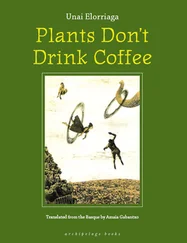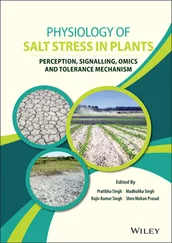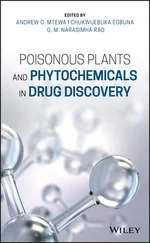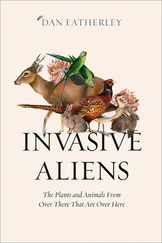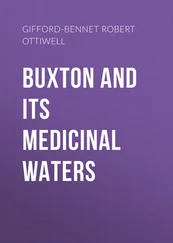1300 1294
1301 1295
1302 1296
1303 1297
1304 1298
1305 1299
1306 1300
1307 1301
1308 1302
1309 1303
1310 1304
1311 1305
1312 1306
1313 1307
1314 1308
1315 1309
1316 1310
1317 1311
1318 1312
1319 1313
1320 1314
1321 1315
1322 1316
1323 1317
1324 1318
1325 1319
1326 1320
1327 1321
1328 1322
1329 1323
1330 1324
1331 1325
1332 1326
1333 1327
1334 1328
1335 1329
1336 1330
1337 1331
1338 1332
1339 1333
1340 1334
1341 1335
1342 1336
1343 1337
1344 1338
1345 1339
1346 1340
1347 1341
1348 1342
1349 1343
1350 1344
1351 1345
1352 1346
1353 1347
1354 1348
1355 1349
1356 1350
1357 1351
1358 1352
1359 1353
1360 1354
1361 1355
1362 1356
1363 1357
1364 1358
1365 1359
1366 1360
1367 1361
1368 1362
1369 1363
1370 1364
1371 1365
1372 1366
1373 1367
1374 1368
1375 1369
1376 1370
1377 1371
1378 1372
1379 1373
1380 1374
1381 1375
1382 1376
1383 1377
1384 1378
1385 1379
1386 1380
1387 1381
1388 1382
1389 1383
1390 1384
1391 1385
1392 1386
1393 1387
1394 1388
1395 1389
1396 1390
1397 1391
1398 1392
1399 1393
1400 1394
1401 1395
1402 1396
1403 1397
1404 1398
1405 1399
1406 1400
1407 1401
1408 1402
1409 1403
1410 1404
1411 1405
1412 1406
1413 1407
1414 1408
1415 1409
1416 1410
1417 1411
1418 1412
1419 1413
1420 1414
1421 1415
1422 1416
1423 1417
1424 1418
1425 1419
1426 1420
1427 1421
1428 1422
1429 1423
1430 1424
1431 1425
1432 1426
1433 1427
1434 1428
1435 1429
1436 1430
1437 1431
1438 1432
1439 1433
1440 1434
1441 1435
1442 1436
1443 1437
1444 1438
1445 1439
1446 1440
1447 1441
1448 1442
1449 1443
1450 1444
1451 1445
1452 1446
1453 1447
1454 1448
1455 1449
1456 1450
1457 1451
1458 1452
1459 1453
1460 1454
1461 1455
1462 1456
1463 1457
1464 1458
1465 1459
1466 1460
1467 1461
1468 1462
1469 1463
1470 1464
1471 1465
1472 1466
1473 1467
1474 1468
1475 1469
1476 1470
1477 1471
1478 1472
1479 1473
1480 1474
1481 1475
1482 1477
1483 1478
1484 1479
1485 1480
1486 1481
1487 1482
1488 1483
1489 1484
1490 1485
1491 1486
1492 1487
1493 1488
1494 1489
1495 1490
1496 1491
1497 1492
1498 1493
1499 1494
1500 1495
1501 1496
1502 1497
1503 1498
1504 1499
1505 1500
1506 1501
1507 1502
1508 1503
1509 1504
1510 1505
1511 1506
1512 1507
1513 1508
1514 1509
Secondary Metabolites of Medicinal Plants
Ethnopharmacological Properties, Biological Activity and Production Strategies
Bharat Singh
Ram Avtar Sharma
Volume 1

Authors
Dr. Bharat Singh
Amity University Rajasthan
Institute of Biotechnology
NH 11C, Kant Kalwar
303002 Jaipur
India
Dr. Ram Avtar Sharma
University of Rajasthan
Department of Botany
JLN Marg
302004 Jaipur
India
Cover Images: Aloe vera watercolor © Mokoshka-f/Shutterstock, abstract background © evryka/Shutterstock
All books published by Wiley-VCHare carefully produced. Nevertheless, authors, editors, and publisher do not warrant the information contained in these books, including this book, to be free of errors. Readers are advised to keep in mind that statements, data, illustrations, procedural details or other items may inadvertently be inaccurate.
Library of Congress Card No.:
applied for
British Library Cataloguing-in-Publication Data
A catalogue record for this book is available from the British Library.
Bibliographic information published by the Deutsche Nationalbibliothek
The Deutsche Nationalbibliothek lists this publication in the Deutsche Nationalbibliografie; detailed bibliographic data are available on the Internet at < http://dnb.d-nb.de>.
© 2020 Wiley-VCH Verlag GmbH & Co. KGaA, Boschstr. 12, 69469 Weinheim, Germany
All rights reserved (including those of translation into other languages). No part of this book may be reproduced in any form – by photoprinting, microfilm, or any other means – nor transmitted or translated into a machine language without written permission from the publishers. Registered names, trademarks, etc. used in this book, even when not specifically marked as such, are not to be considered unprotected by law.
Print ISBN:978-3-527-34732-2
ePDF ISBN:978-3-527-82558-5
ePub ISBN:978-3-527-82559-2
oBook ISBN:978-3-527-82557-8
Traditional system of medicine is also known as indigenous medicine system used to maintain our health and to diagnose and treat several complaints based on theories, beliefs, and family experiences. The indigenous system of medicine has been in practice since the last thousands of years; contributions from community practitioners have maintained their popularity at a global level (Sofowora 1982). The traditional knowledge of plants could be attributed to acceptability, affordability, pleasant feeling, and affectivity against any type of disease as compared with modern medicine (Giday et al. 2003; Tolossa et al. 2013). In the case of traditional medicine, the knowledge is transferred from the elders to the younger generation verbally or by just showing the growing plants in the open fields. Several studies have revealed that transfer of medicinal knowledge of plants to the coming generations is adversely affected by development of modern medicine. The interest of younger generation to traditional knowledge is diminishing day by day (Yineger and Yewhalaw 2007). The wide acceptance of indigenous medicine and limited approach to modern healthcare facilities could be considered as main reasons for the continuation of the traditional practices. The documentation of traditional knowledge can be used to support human healthcare system to maintain healthy lives. The documented information will be used in future course of studies to validate biological and pharmacological activities as exhibited by medicinal plants; therefore it is an urgent need of modern time to enhance the affordability and acceptability of plants in rural and modern healthcare systems (Demie et al. 2018).
The secondary metabolites are not considered as energy sources at the cellular level but play important roles in the interaction of plants with surrounding environment. They protect the plants from abiotic (high temperature, drought) and biotic (bacteria, fungi, insects, nematodes) stresses. On the other hand, the secondary metabolites contribute in systematic determination, used as markers in the classification of plants. The biosynthesis of secondary metabolites is organ and individual specific and in low molecular weight compounds. Similarly, the primary metabolites are useful in performing various metabolic activities for growth and development in plants (Piel 2010; Pagare et al. 2015). The secondary metabolites are used as bioactive compounds for the treatment of various diseases. These secondary metabolites can be grouped into three classes based on their biosynthetic pathways, viz. terpenoids, polyketides, and phenylpropanoid (Verpoorte and Alfermann 2000). The alkaloids are nitrogenous molecules, synthesized by amino acids, viz. tyrosine, phenylalanine, and lysine, by using various enzymes (Croteau et al. 2000). Some secondary metabolites (anthocyanins, anthocyanidins, carotenoids, and flavonoids) have specific roles in pollination and seed dispersal; hence, they are involved in reproduction cycles of plants (Winkel-Shirley 2001). Plant-derived secondary metabolites have made an important contribution in the treatment of various diseases including cancer, infections, and inflammations. The immunomodulatory vaccines (edible vaccines) have been obtained from plant sources and are exploring clinically for treatment of viral infections (Woods et al. 2017). Secondary metabolites in plants can be divided into the following chemically defined groups: terpenes, phenolics, nitrogen, and sulfur compounds.
Читать дальше


